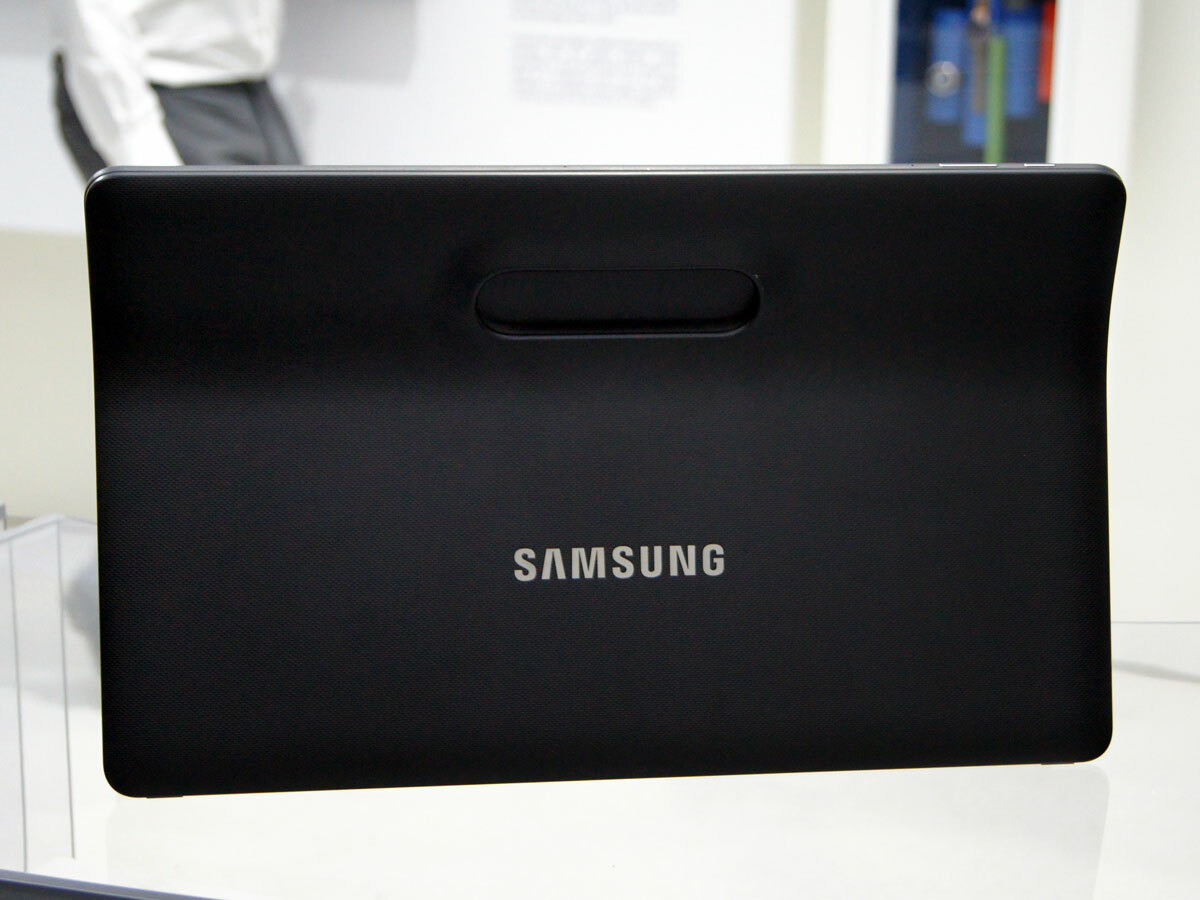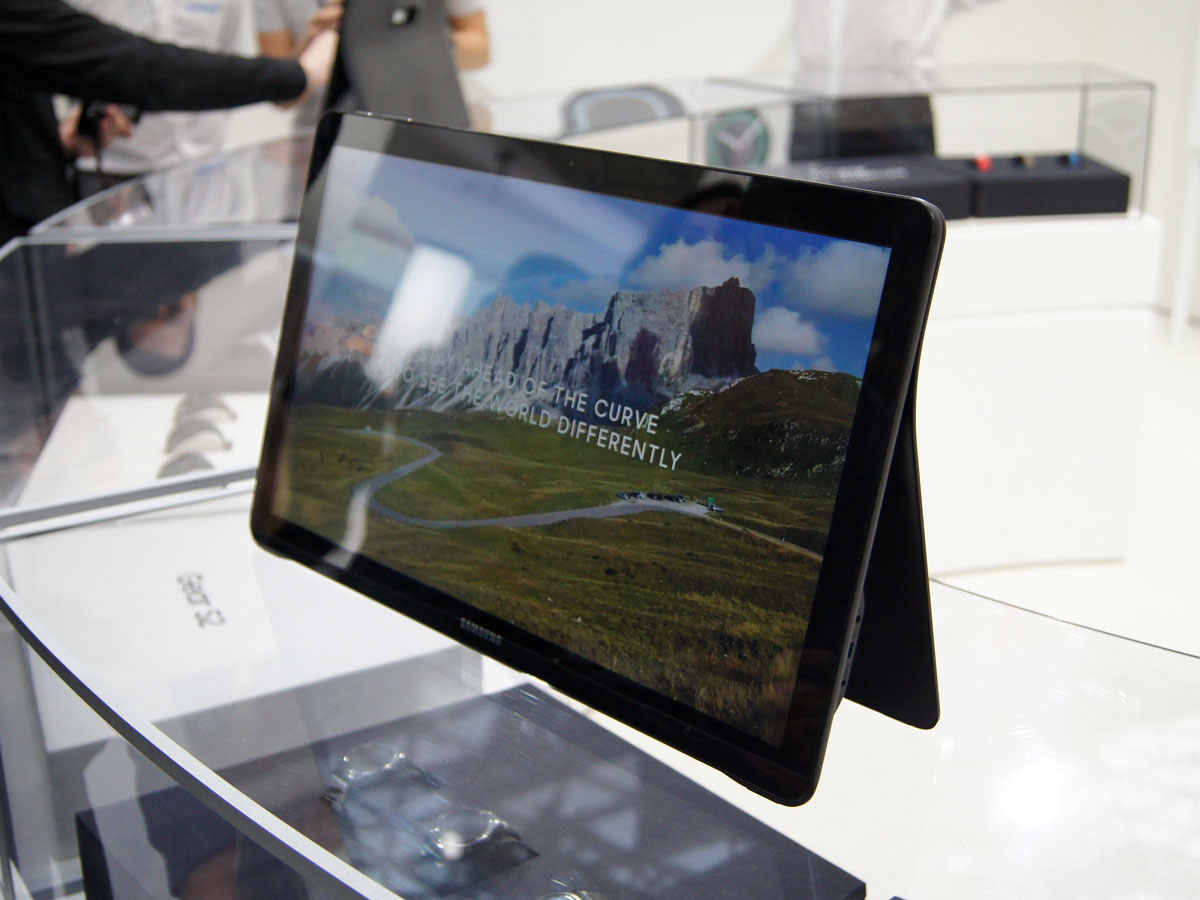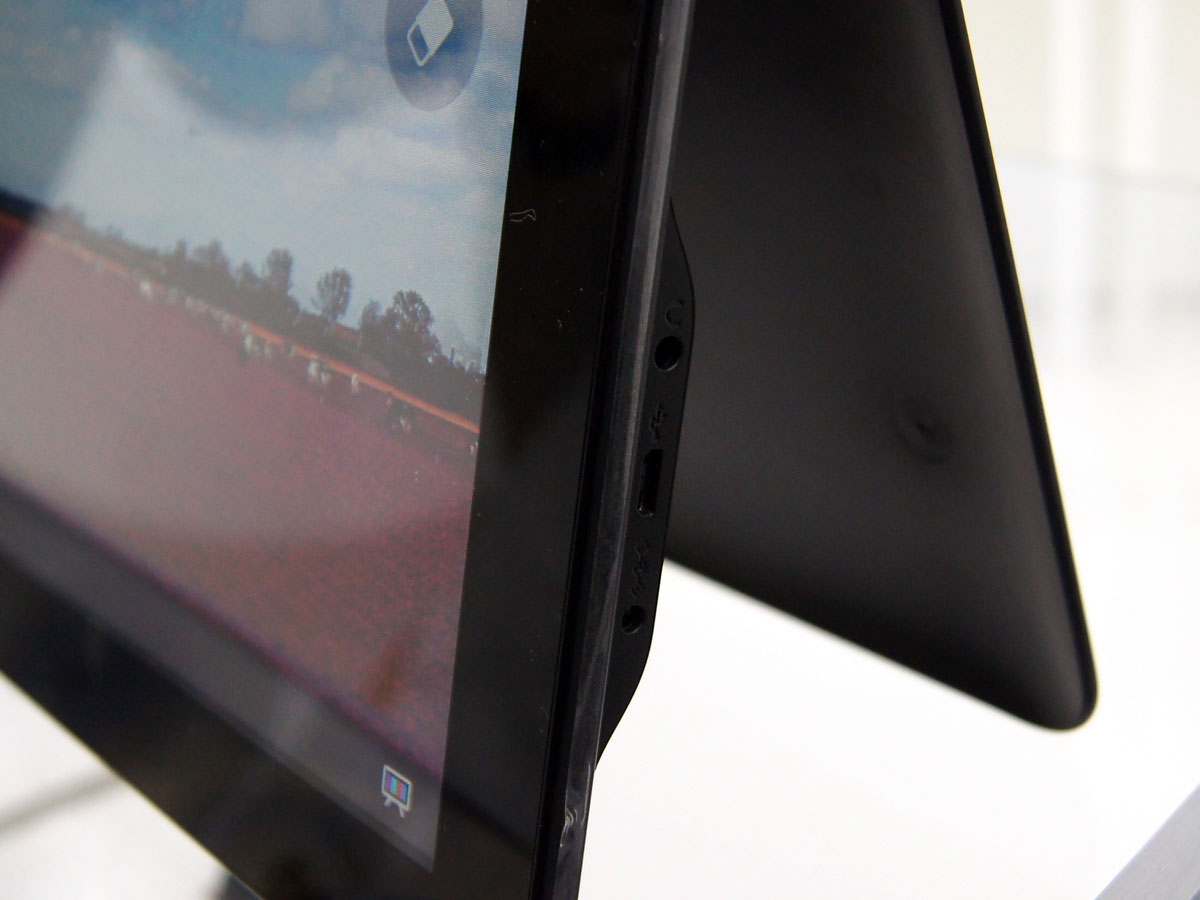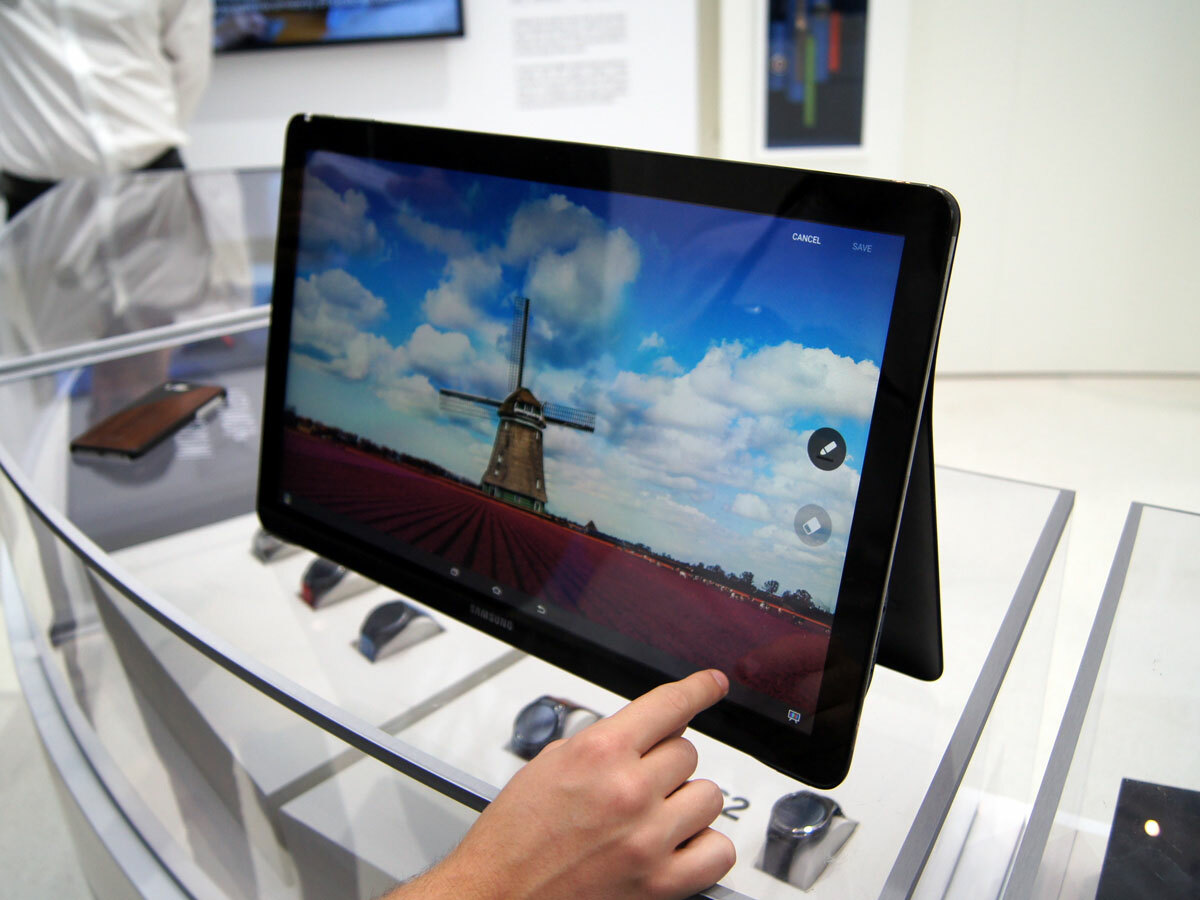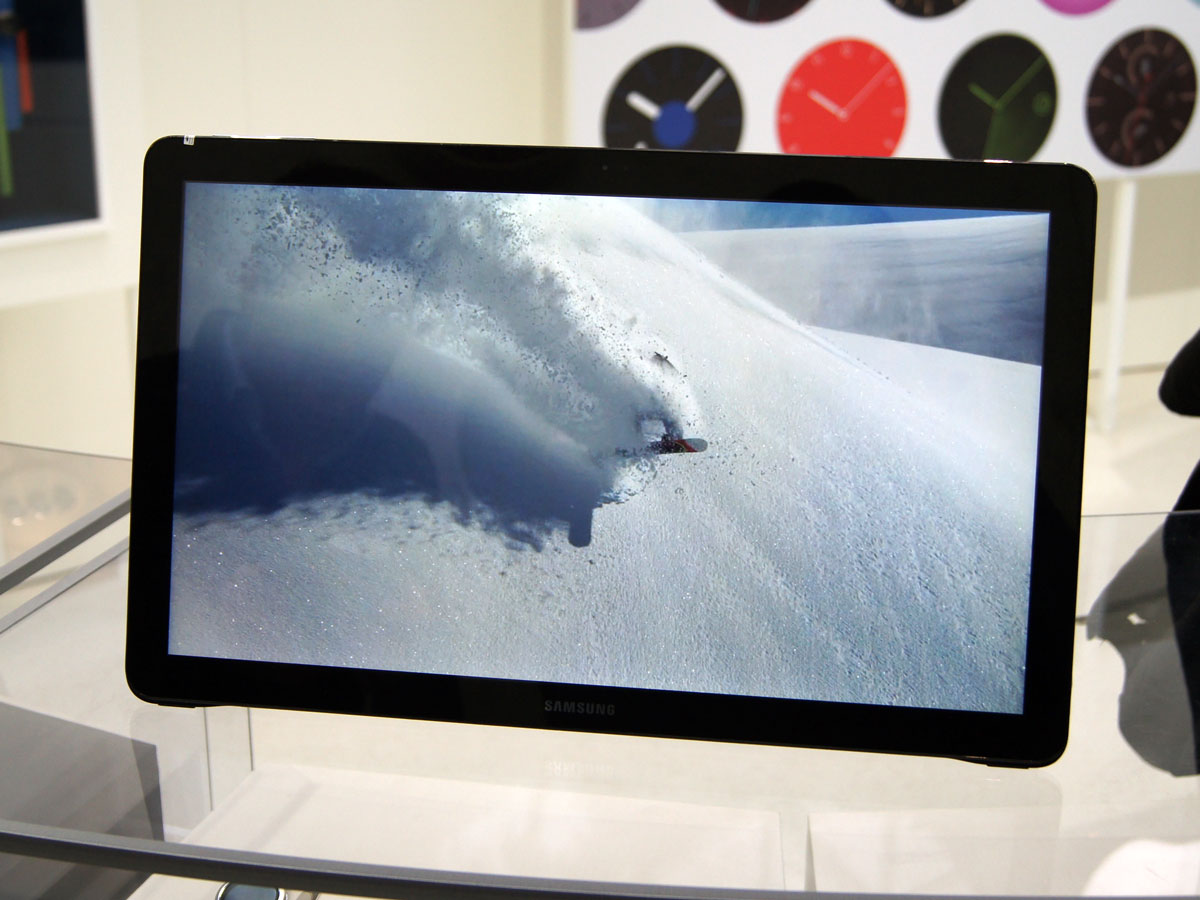Samsung Galaxy View hands-on review
The biggest, strangest tab in town
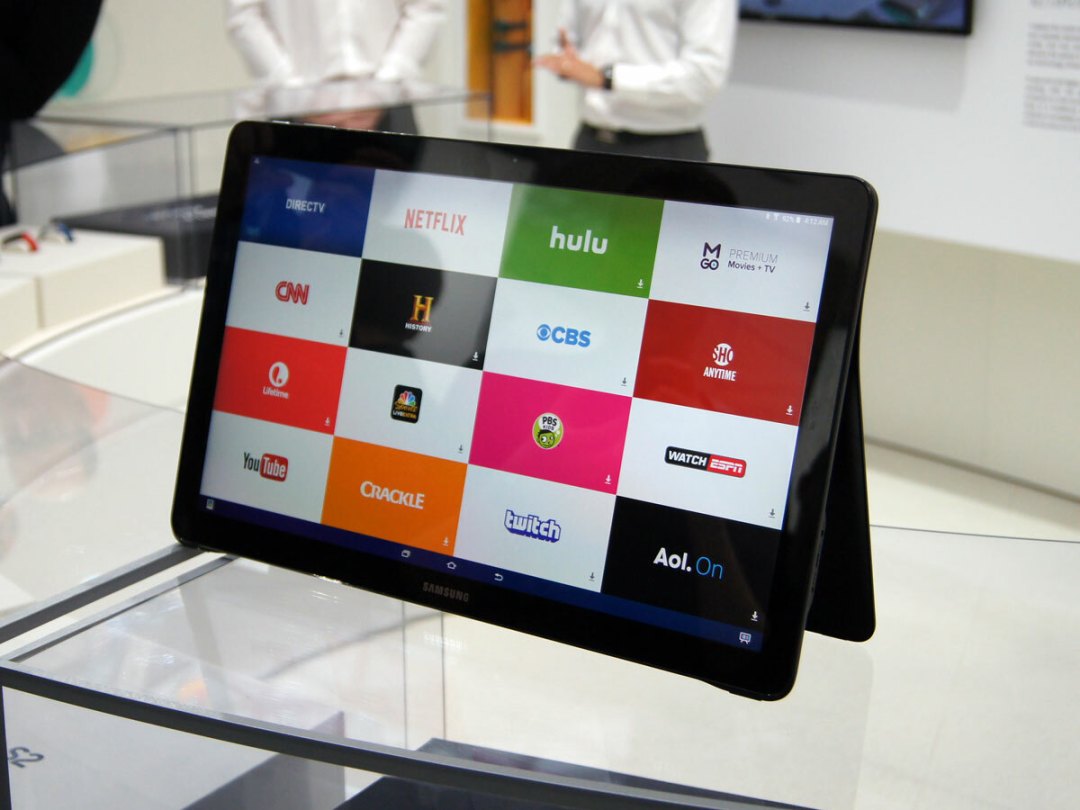
And now for something a little bit different. Weird, even.
This is the Samsung Galaxy View, an 18.4in tablet designed to fill the gap between the TV and the more modestly-sized tablets we all know and love. No, I’m not sure that gap really exists either, but the important thing is that Samsung does. So here we are.
Big in the bedroom
The View’s face is big, as you’d expect, but you probably won’t have anticipated the bizarre arrangement that’s going on round the back.
Yes, that back panel really is curved outwards. No, you can’t detach it. Instead, it’s hinged to a chunky ridge that runs the width of the tablet. That hinge means you can stand the View up, easel-like, but then click it the other way for a more lazy, obtuse stance that works on your lap or a coffee table.
There’s even a handle integrated into the stand, but if you’re taking it out of the house you’re going to want to use the dedicated carrying case. Of course, the weird shape of that hinged panel means it’s a pretty thick case. It’s a bit heavy for long-term lugging, too. All in all, not the kind of device designed for the daily commute.
Instead, the idea is that you use it as a device that can be moved from room to room. A bit of lap-based multi-tasking in the lounge, Netflix streaming in the kitchen, Fruit Ninja in the bedroom (suit you, sir).
Titanic tablet battle › Apple iPad Pro vs Microsoft Surface Pro 3: the weigh in
Massive screen, shiny screen

The thing is, normal sized tablets arguably already do all of that, and are a darn sight more portable. The counter argument is that the View’s size makes it far more enjoyable for video streaming.
The screen certainly seems decent, although it’s hard to form very strong opinions under the pure white glare of Samsung’s Westfield pop-up showroom. 1920×1080 isn’t a resolution to get all hot and bothered about, and some of the videos with which Samsung had pre-loaded the demo model looked far lower resolution than that, but, fed the right content, this Full HD display looked plenty sharp enough for the sort of Netflix, iPlayer and Google Play diet it’s likely to be consuming. Whites look clean and bright, and colours seem plenty vibrant enough without veering into over saturation.
As you can probably see from the photos, the screen is fairly reflective, but while that might prove a bit of an issue in bright sunlight, in the View’s natural habitat (indoors) I suspect it’s not going to be a major issue.
Getting to all of that streaming content is made a bit quicker and easier by a simple but effective UI overlay, although you can obviously use the standard Android interface if you prefer, accessing everything that a ‘normal’ tablet can.
It’s no powerhouse, with a 1.6GHz oct-core processor providing the brawn, but during the admittedly limited hands-on demo it performed perfectly slickly. The pre-installed games proved lag-free, too – if anything, size will be the bigger obstacle to gaming on the View: it’s not exactly thumb-friendly.
The smaller sibling › Samsung Galaxy Tab S2 9.7 review
Any takers?
The biggest question for the View, though, is whether there’s actually an appetite for a device such as this. Far less portable than a standard tablet and without any of the video inputs of a standard telly – no connecting your PS4, etc – you have to wonder if this is one device destined to fall through a gap rather than fill it.
I mean, if you want to watch telly in your bedroom you just buy a little TV, right? Assuming the $600 US price translates to roughly £400 when the UK price is announced, you could buy two 32in tellies for the same price as the View. Or, more tellingly, one 32in TV and a normal tablet such as a Hudl – to me, that sounds more like a best of both worlds arrangement.
But perhaps there really is a demand for giant tablet such as the View – in which case all that matters is whether it’s any good. We’ll let you know that once we can get our hands on a proper review sample.
